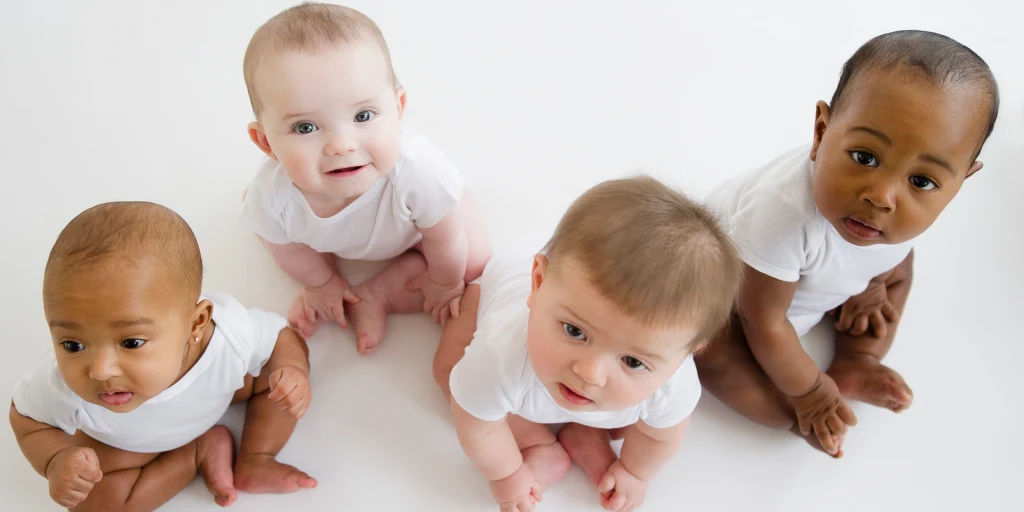Abortion
CNN reports that the birthrate is going up in states with pro-life laws
It is true that since the overturn of Roe v. Wade, the pro-life movement has faced a series of challenges. Most notably, the abortion movement has won seven straight abortion referendums, highlighting their advantage in direct democracy initiatives. (I recently reviewed the flaws in the pro-life movement’s strategy for First Things and on the podcast.) I observed that despite these setbacks—which should certainly provoke a re-evaluation of our strategy—it is unwarranted to claim, as some do, that Dobbs was a “pyrrhic victory.” Tens of thousands of lives have been saved.
On November 21, for example, CNN ran this headline: “Births have increased in states with abortion bans, research finds.” According to the article:
Nearly a quarter of people seeking an abortion in the United States were unable to get one due to bans that took effect after the Supreme Court’s Dobbs decision, researchers estimate. In the first half of 2023, states with abortion bans had an average fertility rate that was 2.3% higher than states where abortion was not restricted, according to the analysis – leading to about 32,000 more births than expected. The findings are based on preliminary births data from the US Centers for Disease Control and Prevention. The research has not yet been peer-reviewed but experts say the data paints a clear picture about the direct impact of abortion restrictions.
Abortion activists, as you might expect, see this rise in the birthrate as a negative thing. In their view, these are babies that would have been aborted under Roe, but have not been aborted under Dobbs, and thus their very existence is actually tragic.
Alison Gemmill, an assistant professor at Johns Hopkins Bloomberg School of Public Health, said as much to CNN. “It’s an assault on reproductive autonomy,” she declared. “We don’t always detect signals in these population aggregates because there’s a lot of variation when you group everybody together. The fact that there is a signal at the population level means that something’s really going on. It’s pretty strong evidence.”
Indeed, CNN explicitly states that the rising birth rate is evidence that abortion is necessary: “After the Dobbs decision, fertility rates increased most significantly in states with longer travel times to the nearest abortion providers, the new research found, including a 5.1% increase in Texas and a 4.4% increase in Mississippi…rising birth rates could indicate that unmet need persists, despite an increase in the number of abortions in the year post-Dobbs.” More babies being born, according to this analysis, is evidence not that pro-life laws work the way they should, but that there is an “unmet need” for feticide.
CNN’s choice of photo for the article was actually the tiny foot of a newborn baby.
In fact, CNN actually goes so far as to claim that not being aborted negatively impacts the child: “Earlier research has found that there are many consequences of unintended birth, affecting the health and livelihood of the mother, the child and the family in general.” In other words, the child would be better off dead—killed by an abortionist using forceps or a suction aspirator. In particular, CNN warns that “that abortion bans have especially affected Hispanic women, with a 4.7% increase in fertility rate in the first half of 2023, as well as younger women, with a 3.3% increase among those in their early 20s.”
Pro-life statistician Michale New had a different take in his own analysis of the data. “Overall, birth data are a very reliable way to demonstrate the lifesaving impact of pro-life laws,” he wrote. “Abortions are difficult to measure since women can obtain abortions in other states or obtain chemical abortion pills through the mail. Furthermore, the results of this Institute for Labor Economics study are broadly consistent with my Charlotte Lozier Institute study of November 2022 and with the June 2023 study in the Journal of the American Medical Association. Both showed an increase in Texas birth rate after the Texas Heartbeat Act took effect.”
The pro-life movement has faced setbacks. But one fact remains: Babies are being born who would have ended up in dumpsters behind abortion clinics. Abortion activists mourn this fact. We should celebrate it.








